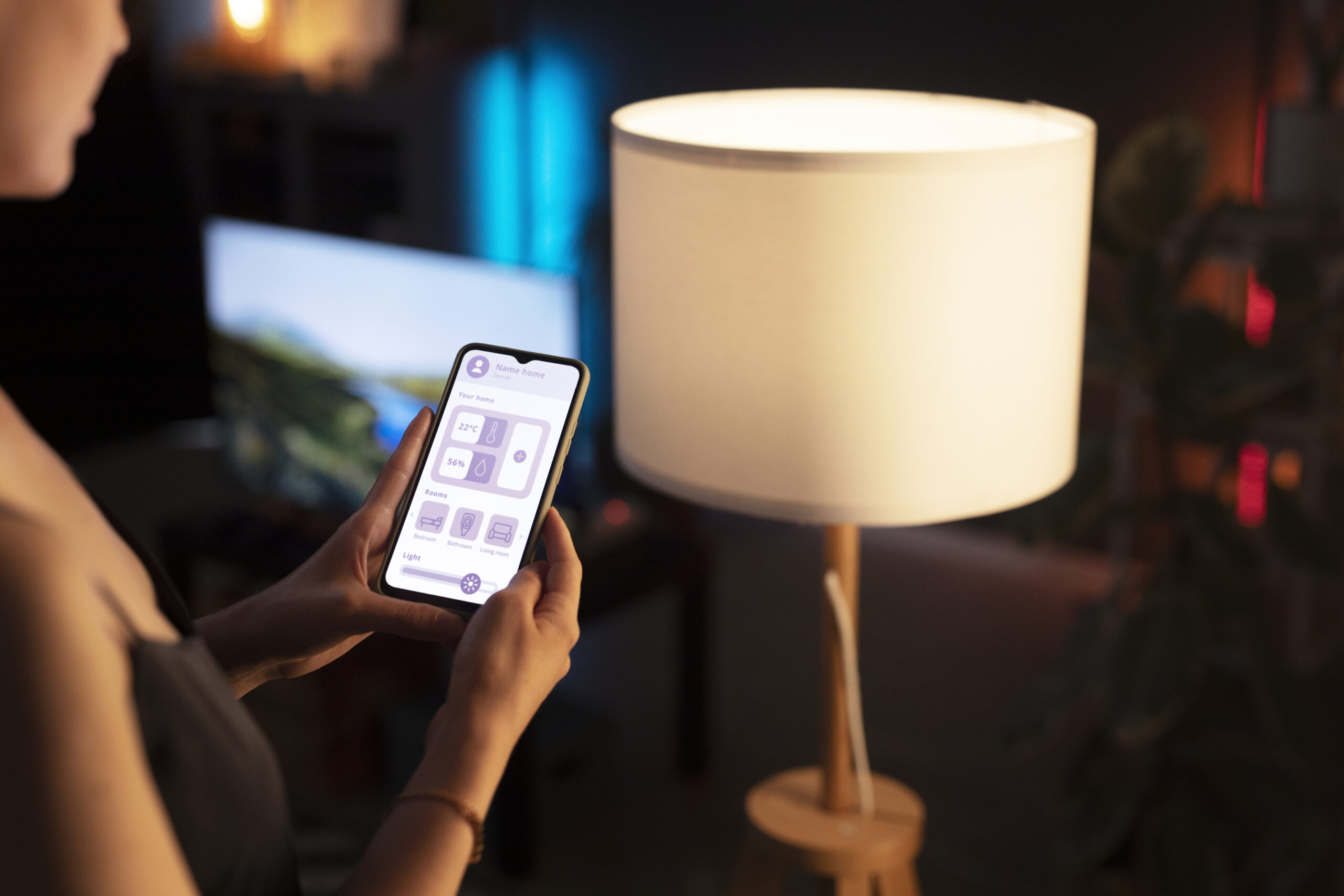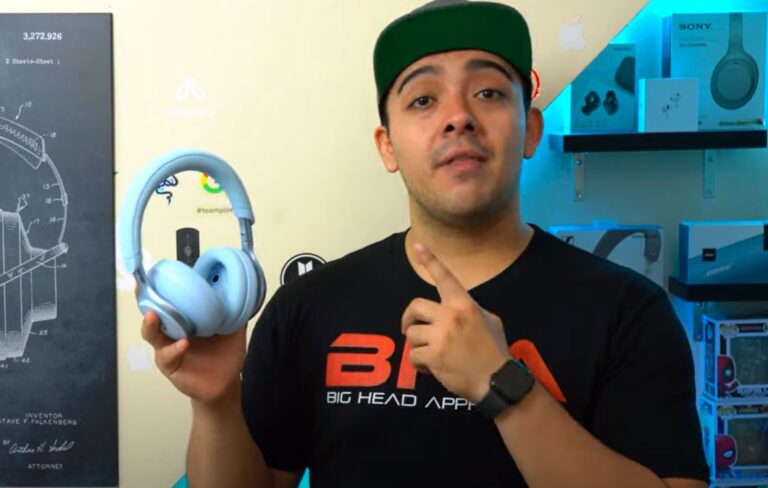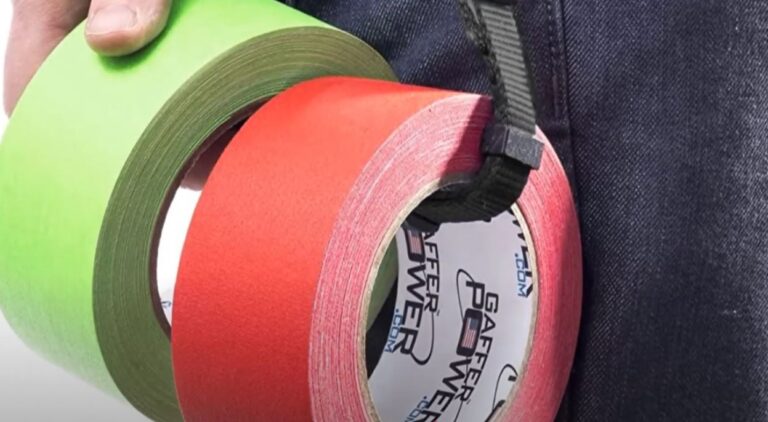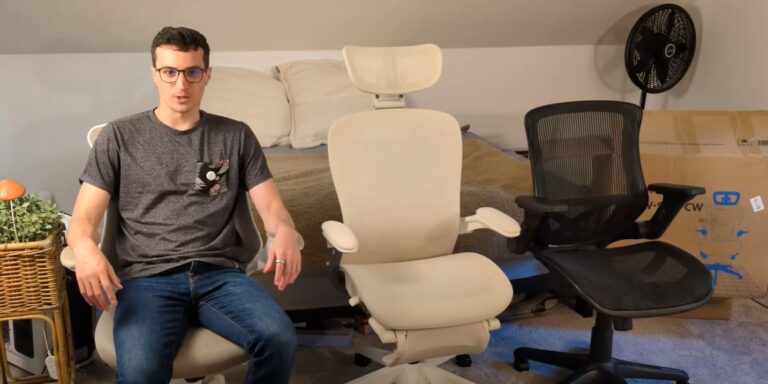5 Best Smart Bulbs for Home in 2025
I transformed my Ohio home with smart bulbs, creating cozy bedrooms and vibrant patios with a tap on my phone.
The ability to tweak lighting for any mood soft whites for movie nights or bold colors for gatherings—changed how I experience my space.
This guide shares my top five picks for US homes in 2025, tested for brightness, fit, and customer satisfaction.
Drawing from my experience and insights from the Lighting Research Center, I’ll help you light up your spaces.
Why Choose Smart Bulbs?
Smart bulbs offer tunable whites (2000K-6500K) and RGB colors, integrating seamlessly with Alexa, Google Assistant, and HomeKit. They save energy, delivering 80-100 lumens per watt (lm/W), perfect for US homes seeking efficiency and ambiance.
I found these bulbs cut my lighting costs while adding voice-controlled convenience. Whether it’s a warm glow or vibrant hues, they elevate every room’s vibe.
What Makes a Great Smart Bulb?
A top smart bulb needs brightness (800-1500 lumens), reliable connectivity (WiFi, Zigbee, or Thread), and compatibility with standard E26 sockets. High color rendering index (CRI) and low flicker ensure vibrant, eye-friendly light.
I tested bulbs in my living room, kitchen, bedroom, and patio, focusing on ease of setup, energy efficiency, and user feedback from US buyers.
Top 5 Smart Bulbs for 2025
After rigorous testing across my home, here are my top five smart bulbs for 2025, with pros, cons, and real-world performance details.
1. Philips Hue White and Color Ambiance
I installed the Philips Hue in my living room for movie nights. This 800-lumen bulb offers vibrant RGB colors and tunable whites (2000K-6500K) via a Zigbee hub.
Its low flicker (<1%) and HomeKit compatibility made dimming seamless. US users praise its reliability, though the hub adds cost.
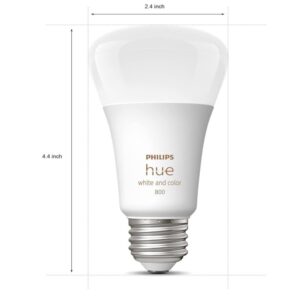
Pros:
Vibrant colors, low flicker, HomeKit support.
Cons:
Requires hub, pricey (~$50 on Amazon).
Details:
- Brightness: 800 lumens
- Connectivity: Zigbee (hub required)
- Fit: E26 socket
- Price: ~$50
- Best For: Living rooms, versatile ambiance
2. LIFX A19 Color
The LIFX A19 lit up my kitchen for cooking tasks. Its 1100-lumen output and 2500K-9000K range delivered crisp, vibrant light without a hub, using WiFi.
US reviewers love its fast Alexa response, but I noticed occasional WiFi lag. It fits E26 sockets perfectly.
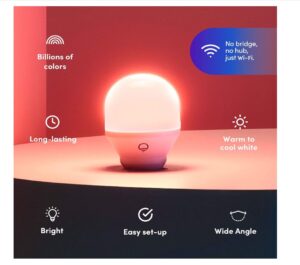
Pros:
Brightest colors, no hub needed, quick setup.
Cons:
Pricier (~$40), occasional connectivity issues.
Details:
- Brightness: 1100 lumens
- Connectivity: WiFi
- Fit: E26 socket
- Price: ~$40
- Best For: Kitchens, task lighting
3. Nanoleaf Essentials A19
I used the Nanoleaf Essentials in my bedroom for a cozy glow. This 800-lumen bulb supports Matter over Thread, offering RGB and 2000K-6500K whites with a high CRI (90+).
Its damp rating suited my patio, but Thread setup required a compatible router. US users rate it highly for smooth dimming.
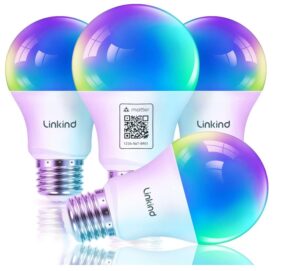
Pros:
High CRI, damp-rated, seamless dimming.
Cons:
Thread setup can be complex, needs router.
Details:
- Brightness: 800 lumens
- Connectivity: Thread (Matter-compatible)
- Fit: E26 socket
- Price: ~$20
- Best For: Bedrooms, patios
4. Sengled Smart Bulb
Sengled’s 1500-lumen Zigbee bulb brightened my large living room. It offers 2700K or 5000K whites, fitting E26 sockets and requiring a SmartThings hub.
Its 100 lm/W efficiency impressed me, though non-tunable whites limited versatility. US buyers praise its brightness for open spaces.
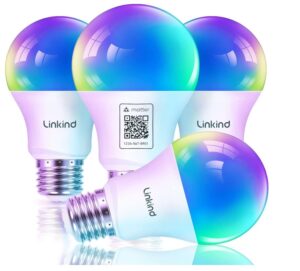
Pros:
Ultra-bright, energy-efficient, affordable (~$15).
Cons:
Non-tunable whites, needs hub.
Details:
- Brightness: 1500 lumens
- Connectivity: Zigbee (hub required)
- Fit: E26 socket
- Price: ~$15
- Best For: Large living rooms
5. Wyze Bulb Color
The Wyze Bulb Color transformed my patio with vibrant RGB and 2700K-6500K whites at 800 lumens. Its WiFi setup was hub-free and Alexa-friendly.
Priced at ~$12, it’s a budget gem, but the app lacks advanced features. US users love its affordability and colors.
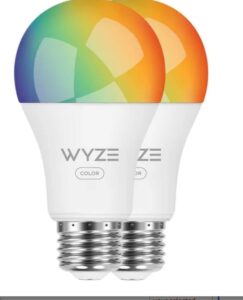
Pros:
Affordable, vibrant colors, easy setup.
Cons:
Limited app features, no HomeKit support.
Details:
- Brightness: 800 lumens
- Connectivity: WiFi
- Fit: E26 socket
- Price: ~$12
- Best For: Patios, budget buyers
Pros and Cons Table
Here’s a comparison of the top five smart bulbs, based on my tests and US customer feedback.
| Bulb | Pros | Cons |
|---|---|---|
| Philips Hue | Vibrant colors, low flicker, HomeKit | Needs hub, expensive (~$50) |
| LIFX A19 | Brightest colors, no hub, fast response | Pricier (~$40), occasional WiFi lag |
| Nanoleaf Essentials | High CRI (90+), damp-rated, smooth dimming | Thread setup issues, needs router |
| Sengled | Ultra-bright (1500 lumens), affordable (~$15) | Non-tunable white, needs hub |
| Wyze Bulb Color | Affordable (~$12), vibrant colors, easy setup | Limited app features, no HomeKit |
Benefits of Smart Bulbs
Smart bulbs create tailored ambiance, from warm bedroom glows to bright kitchen task lighting. They save energy, using 80-100 lm/W, cutting US electric bills.
Their integration with Alexa, Google Assistant, and HomeKit made my Ohio home feel futuristic. Voice control and app scheduling simplified daily routines.
Key Considerations for Choosing Smart Bulbs
Selecting the right bulb involves balancing brightness, connectivity, fit, and ambiance. I learned this through trial and error across my home’s spaces.
Here’s what to consider, based on my experience and insights from the Lighting Research Center.
Brightness and Efficiency
Choose 800-1500 lumens for living rooms and kitchens. Sengled’s 1500 lumens lit my open space, while Nanoleaf’s 800 lumens suited my bedroom.
High efficiency (100 lm/W, like Sengled) saves ~$10-20 yearly on US energy bills, per EPA estimates.
Connectivity
WiFi bulbs (LIFX, Wyze) need no hub, ideal for simple setups. Zigbee (Hue, Sengled) or Thread (Nanoleaf) offer stable connections but may require extra hardware.
I found WiFi bulbs easier to set up, but Zigbee was more reliable in my multi-device home.
Fit and Installation
Most US homes use E26 sockets, and all five bulbs fit perfectly. Check damp ratings for patios (Nanoleaf, Wyze). Avoid enclosed fixtures unless specified, as I learned with LIFX overheating.
Setup took 5-10 minutes per bulb, guided by apps. I needed a hub for Hue and Sengled, adding ~$50 to costs.
Color and Ambiance
Tunable whites (2000K-6500K) and RGB colors create versatile moods. Nanoleaf’s high CRI (90+) made colors pop in my bedroom, while Wyze’s RGB lit up patio parties.
Dr. Mariana Figueiro from the Lighting Research Center notes, “Tunable bulbs enhance mood and productivity,” a benefit I felt daily.
My Personal Experience
LIFX brightened my kitchen, making meal prep vibrant and clear. Its 1100 lumens handled late-night baking sessions effortlessly.
Nanoleaf’s warm whites created a cozy bedroom retreat. I set it to 2700K for reading, mimicking candlelight.
Wyze’s budget-friendly colors turned my patio into a party hub. I synced it with music via the app, impressing guests.
Philips Hue was my living room star, with low-flicker light perfect for movie marathons. Sengled’s brightness suited my open-plan space, though I missed color options.
Maintenance Tips
Clean bulbs monthly with a dry cloth to remove dust, as I did to maintain brightness. Update firmware via apps (Hue, LIFX) for new features and security.
Check bulb heat during use. I swapped an enclosed fixture for an open one to prevent LIFX overheating, extending its life.
Cost Analysis
Budget bulbs like Wyze ($12) save upfront, ideal for small setups. Premium bulbs like Philips Hue ($50) last 3-5 years, saving ~$20 long-term via efficiency.
US users report Hue’s durability offsets its cost, while Sengled’s $15 price suits large homes needing multiple bulbs.
Expert Insights
Dr. Mariana Figueiro emphasizes tunable bulbs’ impact on circadian rhythms, improving sleep and focus. Tech reviewer Chris Davies says, “Sengled’s 1500 lumens are unmatched for large US homes.”
These insights aligned with my experience, especially Nanoleaf’s mood-enhancing whites and Sengled’s bright output.
Practical Applications
- Living Rooms: Sengled for bright, open spaces; Philips Hue for versatile ambiance.
- Bedrooms: Nanoleaf for cozy, high-CRI tunable whites.
- Kitchens: LIFX for vibrant, high-lumen task lighting.
- Patios: Wyze or Nanoleaf for damp-rated, colorful accents.
FAQs About Smart Bulbs
Which smart bulb is the brightest?
Sengled, at 1500 lumens, lights up large spaces effortlessly.
Do these bulbs work with Alexa?
Yes, all five support Alexa and Google Assistant; Philips Hue and Nanoleaf also work with HomeKit.
Are smart bulbs energy-efficient?
Yes, they deliver 80-100 lm/W, saving ~$10-20 yearly per bulb in the US.
Can I use them outdoors?
Nanoleaf and Wyze are damp-rated for patios; avoid fully exposed areas.
How long do smart bulbs last?
Most last 3-5 years (25,000 hours), per US user reviews and manufacturer claims.
Connecting with Smart Home Enthusiasts
Smart bulbs have revolutionized my Ohio home, and I’d love to hear about your setups. Which bulbs do you use, and how do they transform your space?
Join smart home forums or social media groups to share tips. I’ve learned so much from others about app tweaks and lighting scenes—let’s connect! #SmartBulbs2025
Conclusion
Philips Hue, LIFX, Nanoleaf, Sengled, and Wyze are 2025’s best smart bulbs for US homes, offering brightness, versatility, and high customer satisfaction. Whether it’s a cozy bedroom or vibrant patio, these bulbs deliver.
Pick the right bulb for your needs and light up your home. Share your lighting ideas below—I’m excited to discuss!

